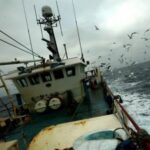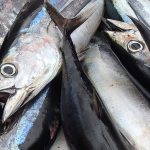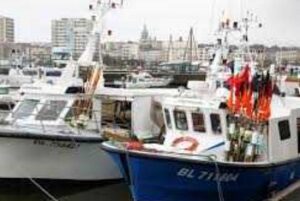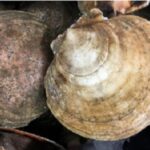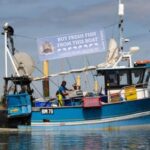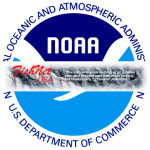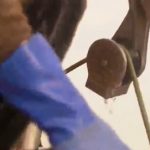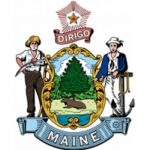Tag Archives: pink shrimp
Southern Shrimp Alliance Welcomes NOAA Fisheries’ Confirmation that U.S. Wild-Caught Shrimp Is the Sustainable Choice
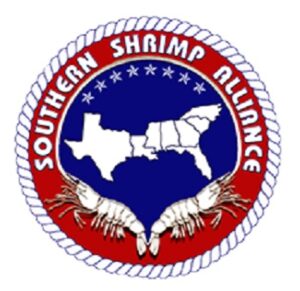 Last week, NOAA Fisheries published an on-line resource with facts regarding wild-caught American shrimp, explaining what makes it a sustainable seafood choice. Shrimp is, far and away, the most popular seafood in America. As NOAA Fisheries explains, “now about one-quarter of the seafood Americans eat is shrimp.” Yet, despite Americans’ love of shrimp, the U.S. shrimp industry is struggling. NOAA Fisheries notes that despite the fact that landings volumes were roughly the same in 2023 as they were in 2022, preliminary data from the Gulf of Mexico show that the industry sold $329 million of wild-caught shrimp in 2022 and that revenue dropped to $204 million in 2023 – a 38 percent drop.” more, >>CLICK TO READ<< 16:29
Last week, NOAA Fisheries published an on-line resource with facts regarding wild-caught American shrimp, explaining what makes it a sustainable seafood choice. Shrimp is, far and away, the most popular seafood in America. As NOAA Fisheries explains, “now about one-quarter of the seafood Americans eat is shrimp.” Yet, despite Americans’ love of shrimp, the U.S. shrimp industry is struggling. NOAA Fisheries notes that despite the fact that landings volumes were roughly the same in 2023 as they were in 2022, preliminary data from the Gulf of Mexico show that the industry sold $329 million of wild-caught shrimp in 2022 and that revenue dropped to $204 million in 2023 – a 38 percent drop.” more, >>CLICK TO READ<< 16:29
Is U.S. Wild-Caught Shrimp Sustainable? The Short Answer Is Yes
 U.S.-harvested shrimp is nutritious, delicious… and sustainable! The shrimp fishery has also historically been a culturally important economic engine. It provides a livelihood for thousands of U.S. commercial fishermen. U.S. shrimp are a sustainable seafood option, and the United States sets a global precedent for shrimp trawl bycatch reduction. But our nation’s shrimp industry is struggling to stay afloat and there’s confusion about its sustainability. Here are the facts about U.S. wild-caught shrimp. Most U.S. shrimp are caught in the Southeast from Texas to North Carolina. Three species—white shrimp, pink shrimp, and brown shrimp—make up the vast majority of the shrimp caught. more, >>CLICK TO READ<< 10:22
U.S.-harvested shrimp is nutritious, delicious… and sustainable! The shrimp fishery has also historically been a culturally important economic engine. It provides a livelihood for thousands of U.S. commercial fishermen. U.S. shrimp are a sustainable seafood option, and the United States sets a global precedent for shrimp trawl bycatch reduction. But our nation’s shrimp industry is struggling to stay afloat and there’s confusion about its sustainability. Here are the facts about U.S. wild-caught shrimp. Most U.S. shrimp are caught in the Southeast from Texas to North Carolina. Three species—white shrimp, pink shrimp, and brown shrimp—make up the vast majority of the shrimp caught. more, >>CLICK TO READ<< 10:22
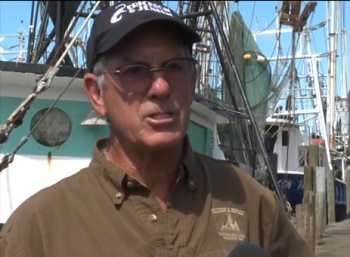
Coronavirus: Fishing markets impacted by new restaurant guidelines and shifting markets
One of the owners of ‘Erickson and Jensen’ says these changes have not impacted the prices of their shrimp, but it has impacted their actual sales. ‘Erickson and Jensen’ has been a family-run shrimp business since the 1950s. “Well we’ve been doing this for a long time, my family is multi-generational, we’ve always been fisherman,” said Grant Erickson.,, While they’ve seen their sales to restaurants go down, they have seen their sales to markets like Publix go up. “We can see the change happening in that there is a heavier demand in retail than in the restaurant area,” said Erickson. >click to read< 10:03
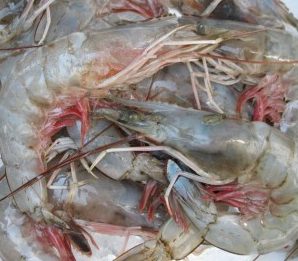
Fishing for White, Brown, and Pink Shrimp is Now Open Off South Carolina in Federal Waters
Federal waters adjacent to South Carolina state waters are open to fishing for white, brown, and pink shrimp as of 4:15 p.m., local time, June 13, 2018. South Carolina state waters remain closed until the state determines an appropriate reopening date. South Carolina closed its state waters to all shrimping on January 10, 2018, due to a prolonged period of water temperatures at or below 9°C in the region. South Carolina requested NOAA Fisheries close federal waters off South Carolina to shrimping. The federal closure was effective January 17, 2018. >click to read<18:17
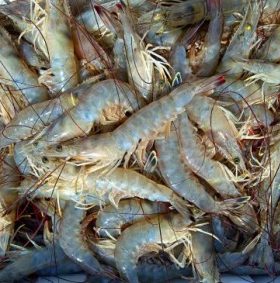
Federal waters off Georgia, South Carolina closed to fishing for brown, pink, white shrimp
The Georgia Department of Natural Resources announced on Jan. 24 that NOAA Fisheries have closed federal waters off Georgia to all fishing for brown, pink, and white shrimp. During the closure, no person may trawl for brown, pink, or white shrimp in federal waters off Georgia effective at 8:45 a.m. on Jan. 24Georgia, South Carolina NOAA Fisheries will issue a new Fishery Bulletin announcing the re-opening to shrimp harvest in federal waters off Georgia once the date is determined.. >click here to read< and in South Carolina >click here to read<17:55
Illuminating Fishing Nets Prevent Bycatch
 Bycatch is an economic and environmental problem for commercial fishing. Large trawlers often scoop up sea-life other than the species they’re targeting, and if there’s too much bycatch fishermen sometimes have to dump their catch. But Bob Hannah of the Oregon Department of Fish and Wildlife may have found a simple, affordable solution. He tells Living on Earth’s Emmett FitzGerald how local shrimp fishermen are eliminating bycatch of an important smelt species by lighting up their nets with LEDs. The waters off the coast of Oregon teem with delectable pink shrimp. But shrimpers often also scoop up fish they don’t want, what’s known as “by-catch”, in particular a smelt called the eulachon. And that is costly – for the eulachon, and the fishing boat operators. But Government scientists have discovered a nifty way to cut the eulachon by-catch using LED lights. Bob Hannah of the Oregon Department of Fish and Wildlife told Living on Earth’s Emmett FitzGerald all about it. Read the story here 19:59
Bycatch is an economic and environmental problem for commercial fishing. Large trawlers often scoop up sea-life other than the species they’re targeting, and if there’s too much bycatch fishermen sometimes have to dump their catch. But Bob Hannah of the Oregon Department of Fish and Wildlife may have found a simple, affordable solution. He tells Living on Earth’s Emmett FitzGerald how local shrimp fishermen are eliminating bycatch of an important smelt species by lighting up their nets with LEDs. The waters off the coast of Oregon teem with delectable pink shrimp. But shrimpers often also scoop up fish they don’t want, what’s known as “by-catch”, in particular a smelt called the eulachon. And that is costly – for the eulachon, and the fishing boat operators. But Government scientists have discovered a nifty way to cut the eulachon by-catch using LED lights. Bob Hannah of the Oregon Department of Fish and Wildlife told Living on Earth’s Emmett FitzGerald all about it. Read the story here 19:59
Oregon’s pink shrimp fishermen voluntarily suspend harvesting operations
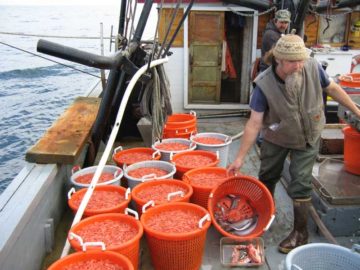 The pink shrimp fleet based in Oregon agreed to suspend harvesting operations May 4, due to an over abundance of sub-legal sized shrimp. After six years of record catches, the fleet was expecting the worst after this winter’s El Nino was elevated to “super” status, as the warm water associated with an El Nino is usually detrimental to shrimp recruitment, but those fears have been erased, according to a release from the Oregon Trawl Commission. The start of this year’s season was delayed for three weeks over a price dispute, but once the nets hit the water, fishermen were surprised to see a strong year class of one-year-old shrimp in the water. Read the rest here 09:34
The pink shrimp fleet based in Oregon agreed to suspend harvesting operations May 4, due to an over abundance of sub-legal sized shrimp. After six years of record catches, the fleet was expecting the worst after this winter’s El Nino was elevated to “super” status, as the warm water associated with an El Nino is usually detrimental to shrimp recruitment, but those fears have been erased, according to a release from the Oregon Trawl Commission. The start of this year’s season was delayed for three weeks over a price dispute, but once the nets hit the water, fishermen were surprised to see a strong year class of one-year-old shrimp in the water. Read the rest here 09:34
Bringing the pink shrimp back to Petersburg
 Petersburg once was host to sound enterprise of commercial shrimp fisheries and processing plants, drawing in hundreds of thousands – even millions of pounds of shrimp, ranging from the tiny pink crustaceans commonly found gracing salads to their larger brethren that are fried, grilled, battered and steamed in cuisine across the world. Read the rest here 06:55
Petersburg once was host to sound enterprise of commercial shrimp fisheries and processing plants, drawing in hundreds of thousands – even millions of pounds of shrimp, ranging from the tiny pink crustaceans commonly found gracing salads to their larger brethren that are fried, grilled, battered and steamed in cuisine across the world. Read the rest here 06:55

































